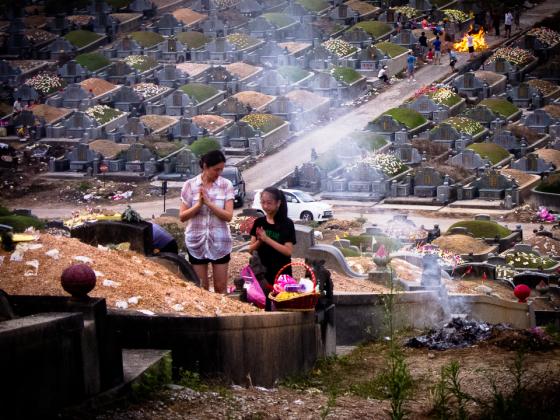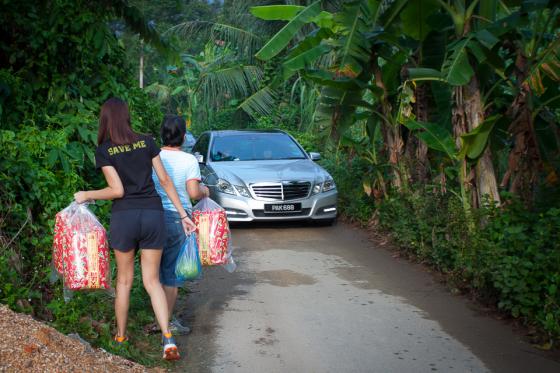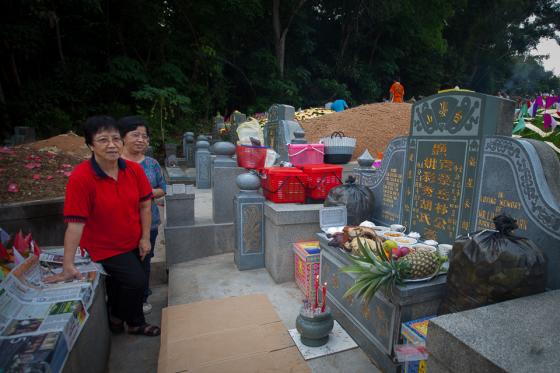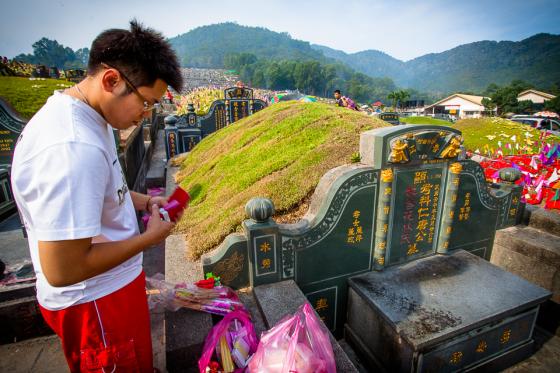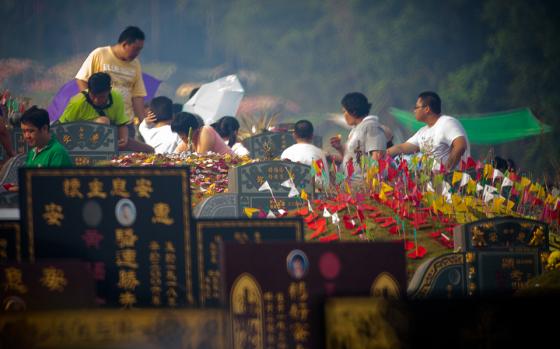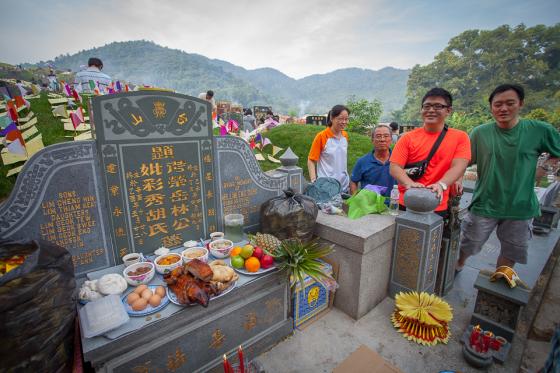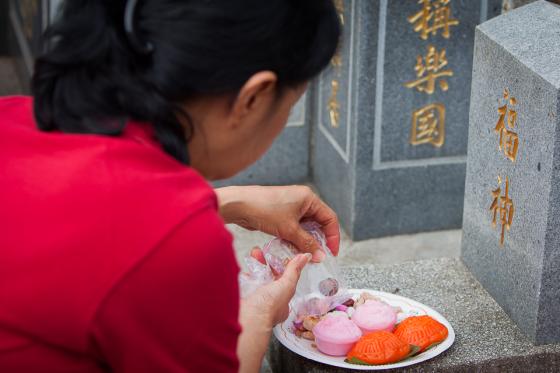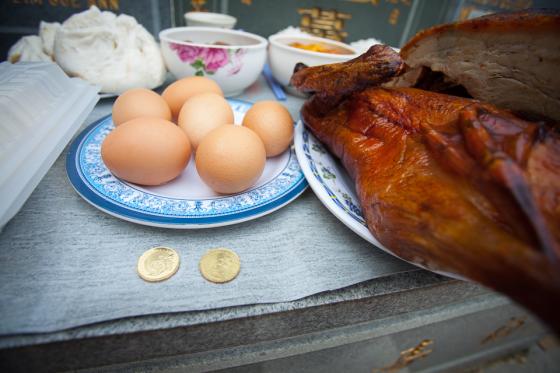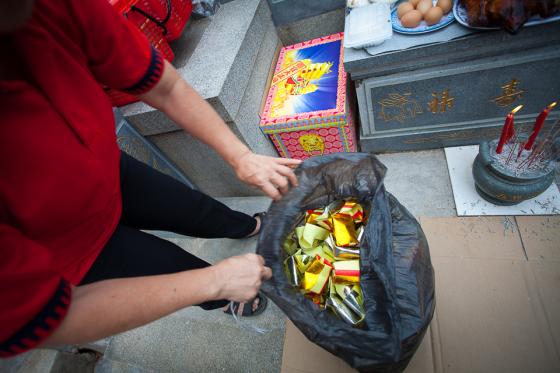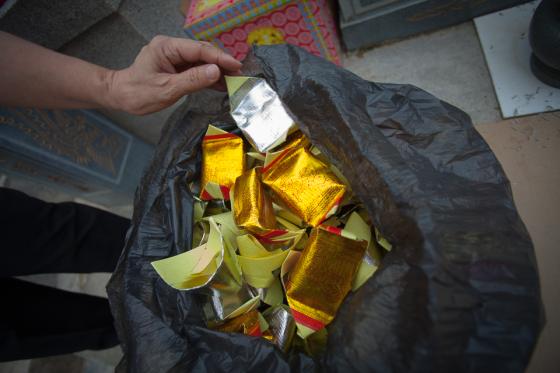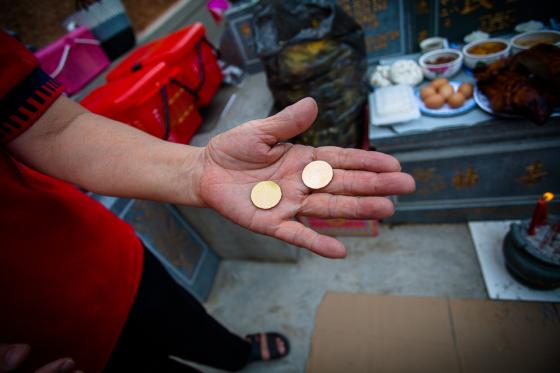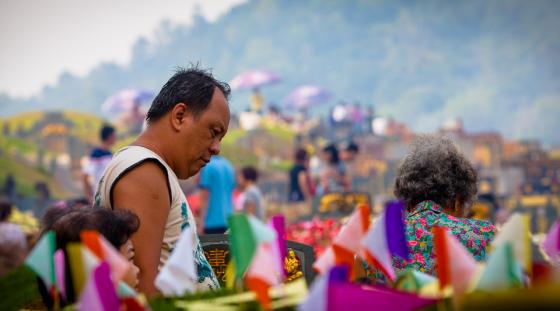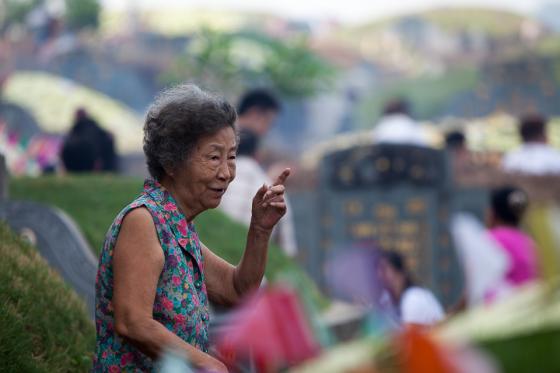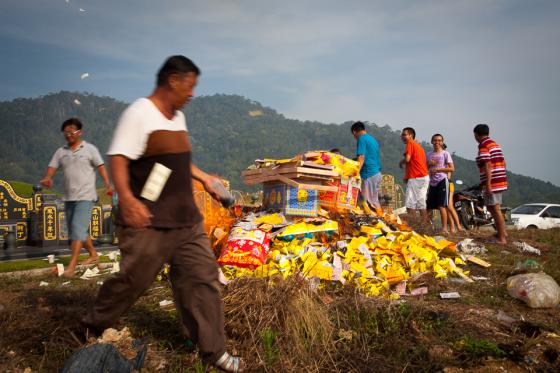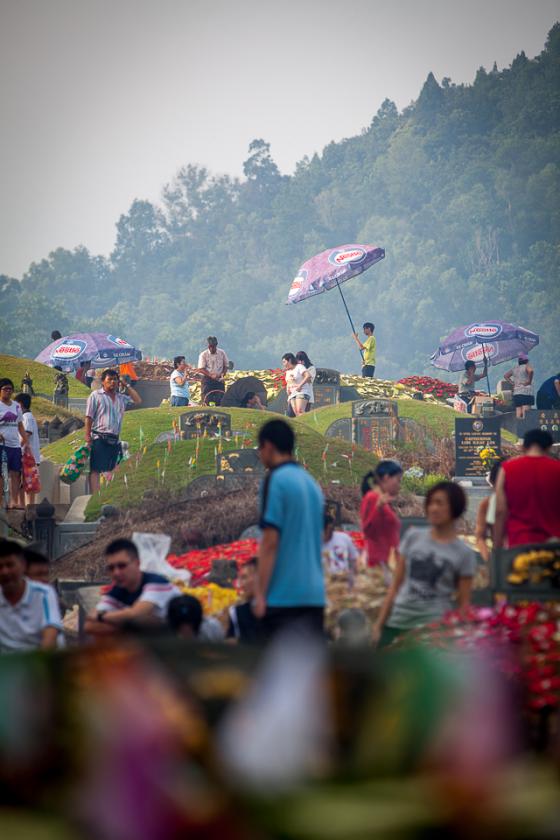Chinese All-Soul's Festival
Every year in the “Spring” Chinese traditional religionists flock to graveyards to honor their ancestors.
It’s quite a big event.
The small town I live in Penang, Malaysia has the benefit of never having traffic jams—except on the Sunday each year that falls nearest to this Chinese holy day.
On this day you may have to give up on getting to certain parts of the town because of the congestion centering around the Chinese cemetery.
This year we talked members of the Lim family at the Chinese Cemetery at Teluk Bahang, Penang, Malaysia. They compared it to “All Souls Day” in Britain, though to my American readers it probably more resembles Memorial Day—especially as it is observed in the South.
They explained that each year on the 95th day of the Chinese calendar they must visit their ancestor’s graves. This usually happens on 5 April, though on leap years it happens on 4 April.
Actually there’s a 10-day period before & after this date when they can visit, unless their deceased have died in the past three years, in which case their souls only know to come exactly on the 95th day. After that they become more enlightened & realize that they can come & meet their living offspring anytime over the 20-day period.
Since most of the deceased have been gone for more than 3 years, the living come in stages in order to not overcrowd cemeteries on the same day. But the largest crowds come on Sundays when people “outstation” (from out of town) are off work & can come.
Chinese arrive & clean the graves from weeds, . . .
sometimes put new sod over the graves & then make offerings.
Then they take square pieces of yellow paper & put them in a checkerboard pattern over the graves of the deceased. They used to put pebbles on these papers to keep them from blowing away, but that never worked very well, so today they poke them with skewers topped with flags.
Our informant—a lady in her late 40s who was visiting her parents’ grave, could not remember the reason for the square papers on the graves. It’s a tradition that everyone keeps, though perhaps no one knows the original meaning. However, it makes it easy to see who has been diligent to clean their ancestors’ graves & who is late showing up!
On all graves you see the Chinese writing in gold & on this day the graves covered in yellow papers.
On some you’ll see the one side has Chinese writing in red with the dirt mound covered in red papers. Red means life, so this means that the spouse is still alive. When they pass away, someone will paint over their red lettered name in gold paint & the next year they’ll get yellow papers on their grave.
They try to bring all the things they recall that their ancestors liked the most . . .
—favorite foods, etc.
But it’s pretty standard to bring roast chicken, a piece of roast pork & bak pao (Chinese bread buns that appear uncooked to the Western eye).
They bring large brightly decorated boxes full of paper “money” to offer to their ancestors’ spirits, because just about every ancestor liked money.
Each offering also includes plastic bags of “money” in two different styles . . .
—one printed red with a Chinese god on it, one plainer.
They light jos sticks & must keep them burning continually the entire time they are at the grave. And they offer drinks & food to the three gods that are positioned under the little stone hut to the right front of the grave—protector gods over their ancestors’ spirits. Also to the sides are lion carvings. They said they don’t know what they mean—perhaps nowadays used just as decorations.
Once the offering has been arranged they toss two local coins. If they come out with two heads or two tails, it means that their ancestors have not yet arrived at the grave to receive their offerings.
In that case the Chinese faithful have to wait an hour before flipping the coins again. Once they get two different sides of the coin showing, they believe their ancestors have arrived.
They then pray to their ancestors. I asked if they pray for their ancestors—for instance that they will enter heaven. Our informant Mrs. Lim exclaimed, “Oh, I feel they’ve already gotten there by now! No, we ask for their blessing on us, our lives, the things we’re doing.”
Then they bring all the paper offerings together, douse them with gasoline . . .
& burn them up, believing that as the smoke rises it goes to their ancestors.
Nearby there was a line through the cemetery—about three graves wide—of Chinese Christian graves. They’re similar to the other Chinese graves, but with no mound of dirt over most, & no statues of gods guarding the graves. On this morning we did not see any Chinese Christians at the graves—perhaps because this happened to be Easter Sunday morning & they were at their churches. But our new Chinese friends pointed out that most of the Chinese Christian graves were decorated with fresh flowers—apparently the Chinese Christians’ way of honoring their ancestors, they said.
They surmised that actually this had been meant to be a Chinese Christian cemetery, but few of the Christians had chosen to bury their dead here, so Buddhists & Taoists had taken over most of the plots.
While chatting we heard the machine-gun-blast of Chinese firecrackers going off nearby. We asked why they use firecrackers on this day. A middle-aged family-member who had been silent until this moment spoke up. He told us that in the realm of the dead this is New Year’s Day, so it’s appropriate for the living to celebrate with the dead by setting off New Year’s firecrackers.
We thanked our new friends—the Lim family—and then roamed through the cemetery—the smell of burning paper, smoke & ashes enveloping us along with the staccato sound of firecrackers.
Over many acres we could see families diligently working over their ancestors’ graves, often under multicolored umbrellas, . . .
but usually bareheaded under the blistering spring Penang sunlight.
Would you like to enrich your portfolio with some stunning SE Asia cultural photography? Check out our upcoming Java-Bali Photo Tour with Matt Brandon. Time's running out to get in on this one-time discounted trip. We'd love to see you there!

